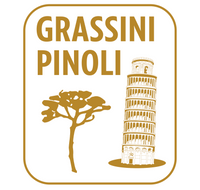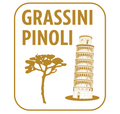PINE NUTS RECIPE: TRIPE WITH PINE NUTS

Tripe with pine nuts: history and tradition for a unique recipe. Eaten in various places and regions of Italy, tripe is one of the most popular dishes in Italian tradition and, even today, it is an evergreen dish in Italian kitchens. What is the history of tripe? How did it come about? Let's see it together here.
The history of tripe
Throughout history, tripe has always been a dish of the poor culture and of the less wealthy classes. In fact, tripe is one of the less valuable parts of the bovine, since it is precisely the stomach, but it remains one of the most renowned dishes of the Lombardy, Tuscany and Lazio regions. The recipe is unique but there are really numerous variations given by the different geographical locations:
- tripe with sauce
- tripe tied with eggs
- tripe on the run
- tripe meatballs
- Florentine tripe
- lamprey
- Tuscan tripe
- tripe reggiana style
- tripe parmesan
- tripe bolognese style
- tripe with fraschetta
- Roman-style tripe
- Trastevere-style tripe
- cord with broad beans
- tripe with beans
- busca
- Milanese tripe
- Lombard tripe
- Porto-style tripe
- tripe with saffron
- tripe soup
- Canepina mountain tripe
- stewed tripe
- tripe “sciabecca” style
- Caen tripe
There are so many variations as you can see but what is tripe really? Tripe is nothing more than part of the bovine digestive system, made up of three forestomachs in which the ingested forage rests before being digested by the animal. After the bovine has been slaughtered, the forestomachs are carefully separated from the other parts of the digestive system, they are emptied and washed, degreased and pre-cooked at a temperature between 60 and 80 degrees. They are then cooled and finally frozen at a temperature of -18 degrees. The freezing technique is very important and affects the final result.
In the past it was very difficult to find tripe that was already cleaned and ready to be cooked and put on the table. This, in fact, depended on the butcher or the "trippaio" who, with great skill, took care of separating the stomachs and cleaning them. Literary sources confirm that this dish was already present on the tables in the distant fifteenth century and the meat was sold by street vendors who prepared these dishes and then sold them for a few pennies. As mentioned, in fact, this dish was born as a poor dish but today it is a highly sought-after culinary tradition and present throughout Italy.
Anita's recipe for tripe with pine nuts
The recipe proposed here is calculated for 4 people. Here are the ingredients:
-800g of veal tripe (stomach giblets)
-100g of celery
-100 gr of carrot
-100 gr of onion
-2 cloves of garlic
-8 tablespoons of extra virgin olive oil
-100g of tomato puree
-50 g of pine nuts
-1 glass of white wine
-1 handful of grated parmesan
-salt and pepper.
Procedure
Chop all the herbs very finely and brown them together with the garlic. Add the tripe and brown everything for a few minutes. Add the wine and let it evaporate. Add the tomatoes and pine nuts, salt and pepper and cook. Add, if necessary, a little hot water or, better, broth. Cook on low heat for about 1 hour. Sprinkle with cheese, mix and serve. Enjoy!

